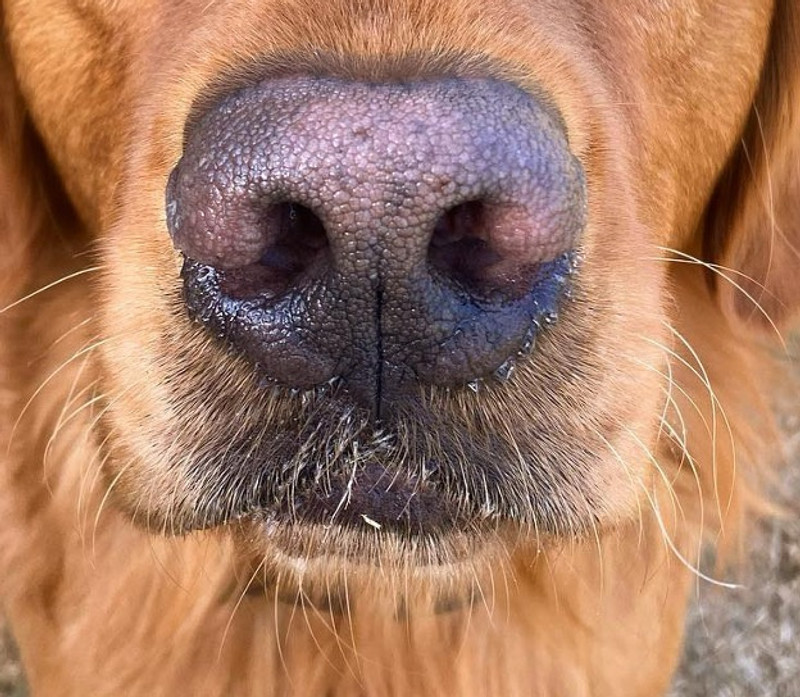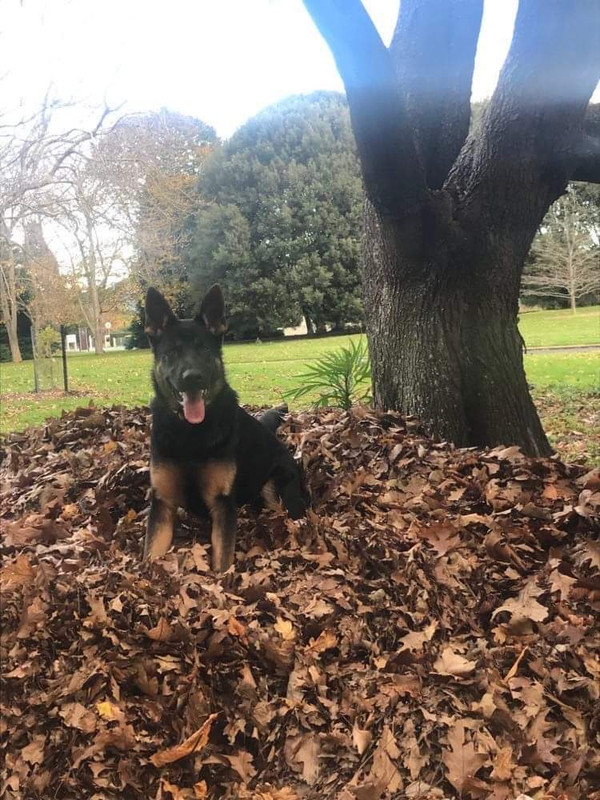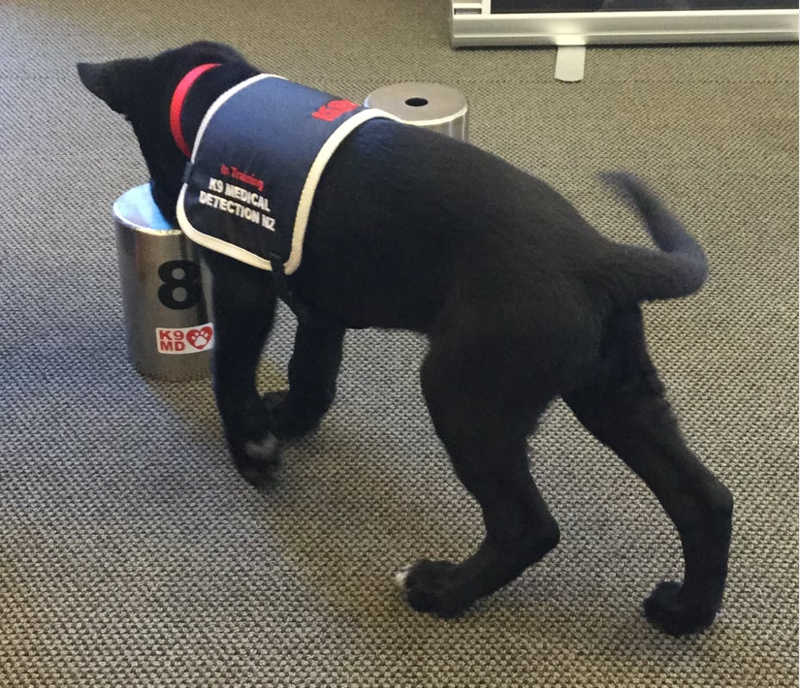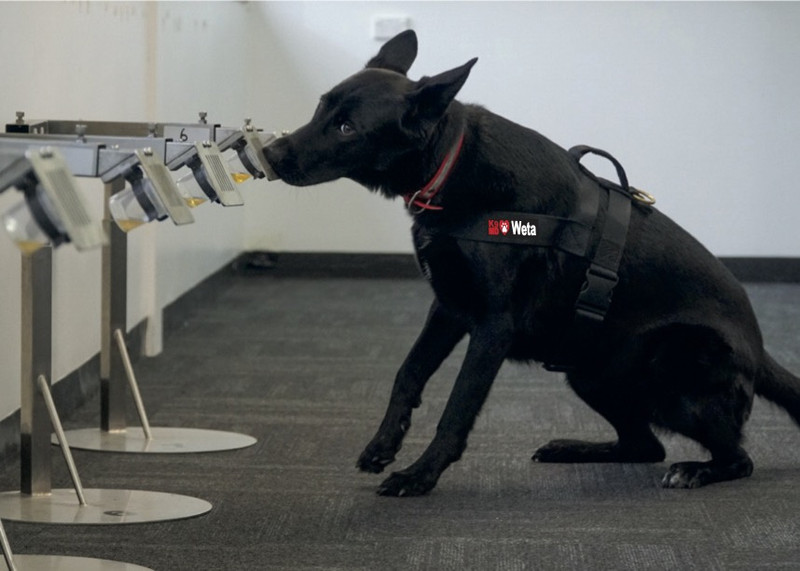Dog Blog Issue Seven
There’s always something quite magical about watching a dog snuffling around, hunting out a particularly delightful odour. Dogs get such joy from this sensory past-time of theirs, and a short walk around the block often extends to an epic voyage of discovery as seemingly every shrub, tree, blade of grass and lamppost must be thoroughly sniffed over and nasally dissected. One does not merely walk when one is a dog, one explores and researches, analyses and delights in an invisible world of information as fully enlightening as Google might be if it had a scratch and sniff capability.
In our previous blog we looked at the important blend of genes, training and temperament in our highly successful K9MD cancer detection dogs. This time let’s take a look at what they are sniffing: the all-consuming VOC’s that get their tails wagging in the training room.
What’s in a VOC?
Volatile Organic Compounds (VOCs) are compounds that easily become vapours or gases at room temperature. They have a low boiling point which means that lots of their molecules evaporate and enter the surrounding air. VOCs are everywhere and include both naturally occurring compounds and human made ones. Common examples are formaldehyde, acetone, methane and benzene. In fact, most smells are VOCs and a lot of them are vitally important to the environment. For instance, plants use VOCs to defend themselves against insects, to attract pollinators and to communicate with one another.
In the animal kingdom, odours are used to detect food sources and environmental toxins and to distinguish kin and predators. Odours emitted from a body often provide cues that convey information about physical or mental state, such as sickness or anger.
Human body odours also have this function. We emit a wide array of volatile organic compounds (VOCs), from our bodies, which vary with age, diet, sex, physiological status and possibly genetic background. Therefore, body odours can be considered as individual ‘odour-fingerprints’.
As far back as the time of Hippocrates, physicians have used Volatile Organic Compounds to their advantage when diagnosing disease. To this day, doctors learn the distinctive smells indicative of certain diseases: the excessive ketones (leading to the production of the VOC acetone) secreted into the breath of patients with diabetes gives a fruity odour. The first children with PKU were recognised because their mothers complained of a musty odour, which was due to the presence of phenylacetate in their urine. Dogs can be used as cancer detectors because they have an extraordinary sense of smell and ability to detect certain VOCs.
Scientists first identified cancer VOCs in 1971, but it it took until 1989 for someone to put dogs and cancer VOCs together and realise the potential. A report in The Lancet examined the case of a dog that repeatedly sniffed a lesion on its owner’s thigh, which was subsequently diagnosed as early-stage melanoma. Over the past several decades, medical investigators have found that dogs could smell maladies such as hypertension and malaria. Then, in 2004, a research team in the United Kingdom conducted a study to see whether dogs could detect bladder cancer from urine samples. After 7 months of training, the dogs got it right 40% of the time. That may not seem amazing by K9MD standards today, but it was statistically significant at the time and inspired others to conduct similar research.
So, K9MD is testament to the fact that dogs can be trained to identify cancer VOC’s present in a patient’s urine, and that our dogs can distinguish between different cancers. What is harder to prove scientifically is exactly which VOC’s are present in each form of cancer. We do know that even in small quantities these compounds are thought to have a distinct odour, particularly in the early stages of cancer when cells are dividing. In order to progress, it is important to understand where a particular cancer VOC originates and how the dogs are able to detect them. The next step is for scientists to translate dogs’ diagnostic skills into clinically useful, standardised protocols.
Replicating what canine cancer detectives can do with their noses is a tall order. Dogs inhale in short breaths up to 300 times a minute. Their olfactory cells are constantly picking up new scents. That’s what makes them these amazing real-time disease detectors. Dogs’ ability to sniff out an odour is mind-blowing compared to humans. By way of analogy, it’s as if we can only see a third of a mile away, while dogs can see 3000 miles away!
Science has made a start in unlocking the mystery of a dog’s ability to recognise cancer by identifying a few of the types of VOC’s they may be sniffing, and K9MD will continue to work to help scientists isolate the specific VOC’s that our dogs get excited about. We hope that, in time, our diagnostic methods will be instrumental in devising a scaled-up laboratory test that will be available to millions.
For now, though, only dogs know the full story when it comes to what they are reading in our VOC’s.





